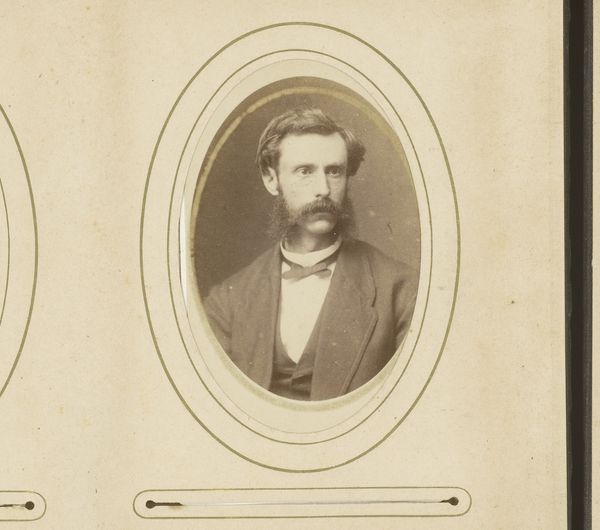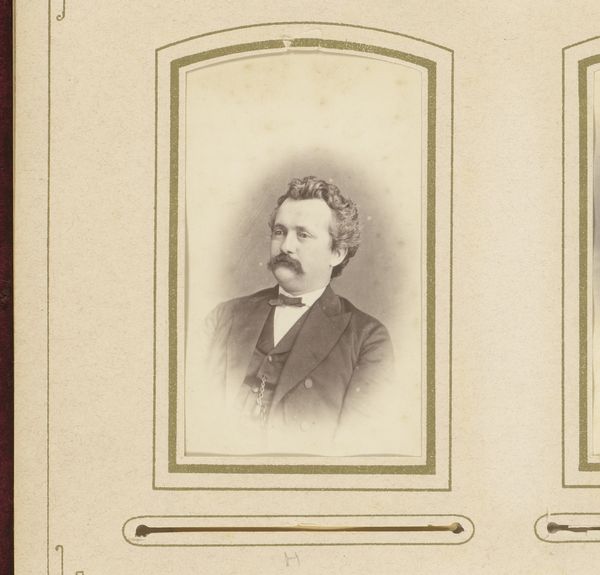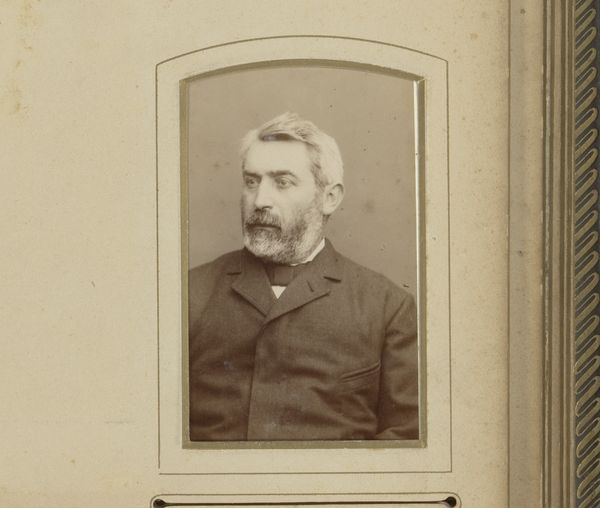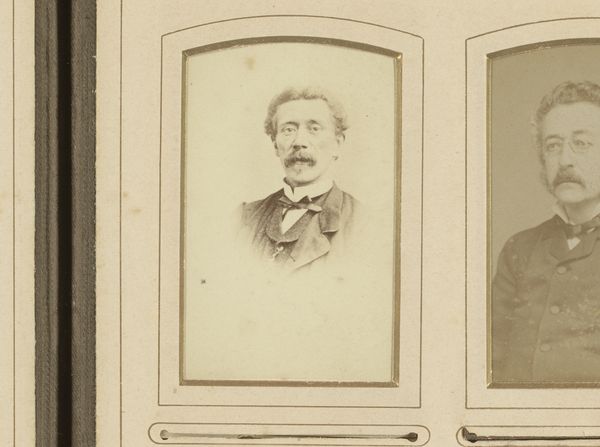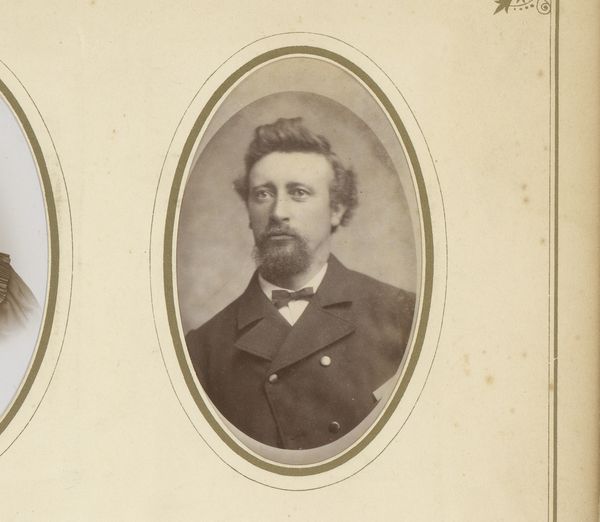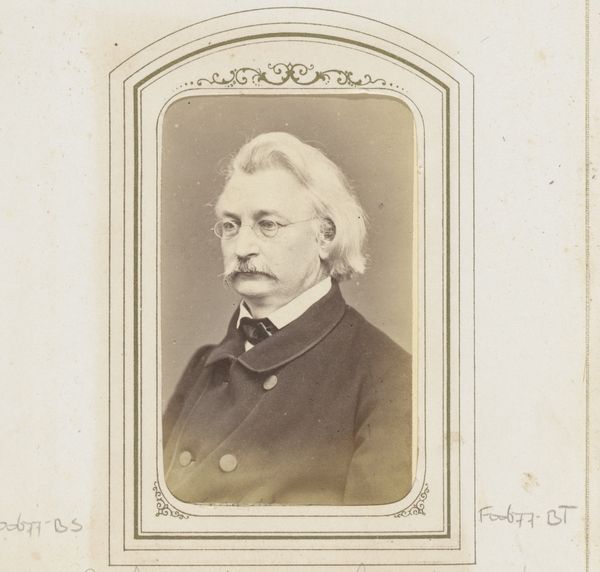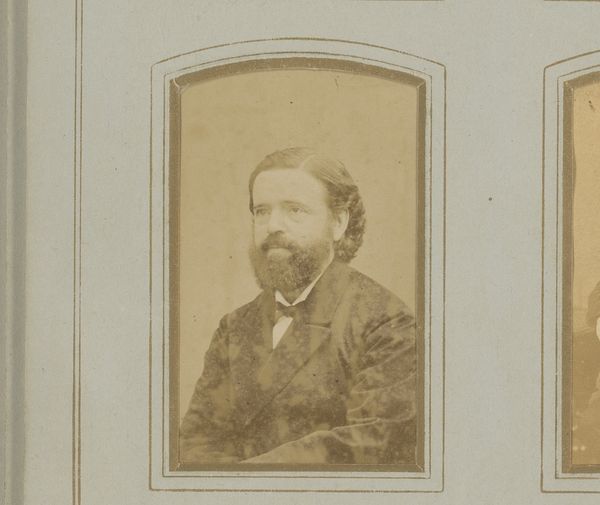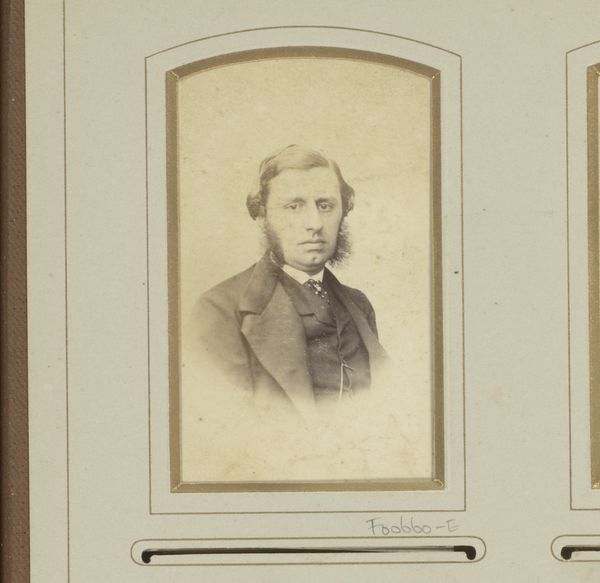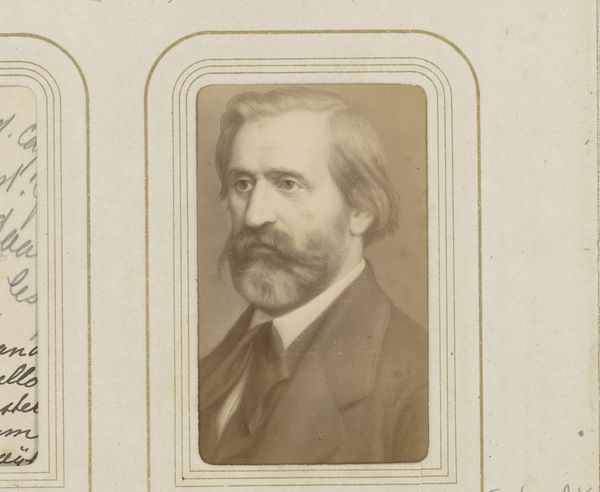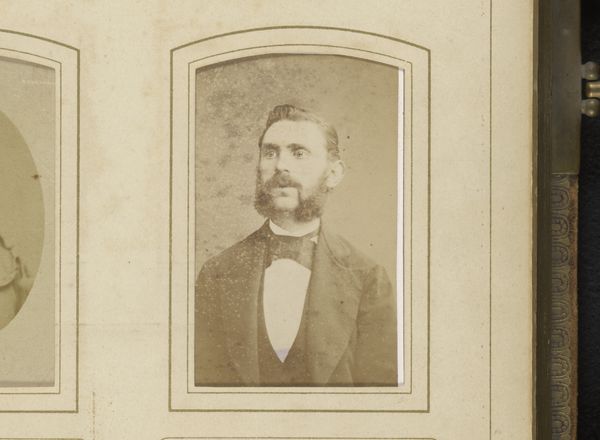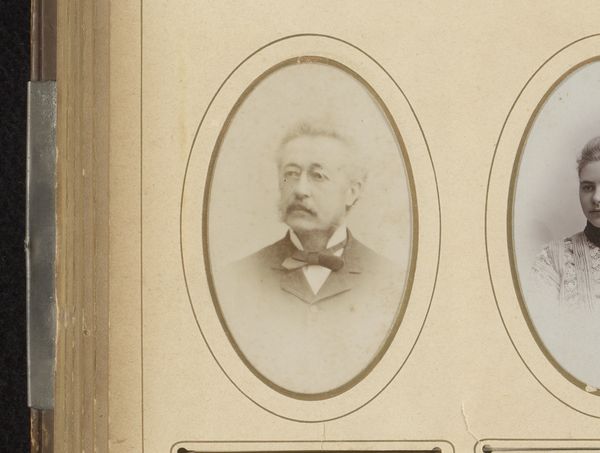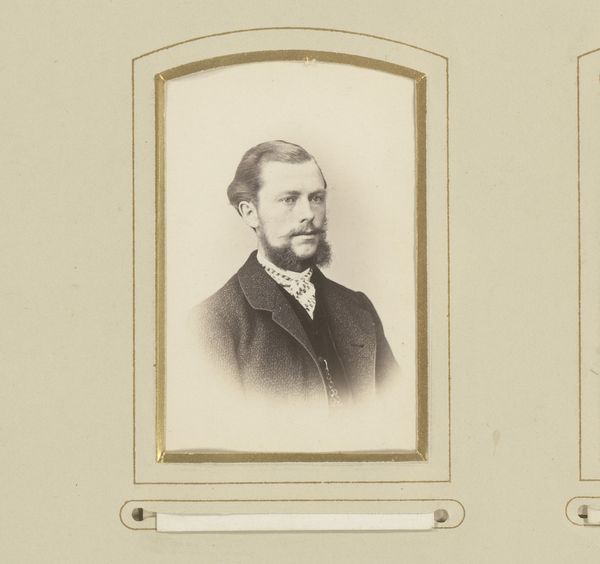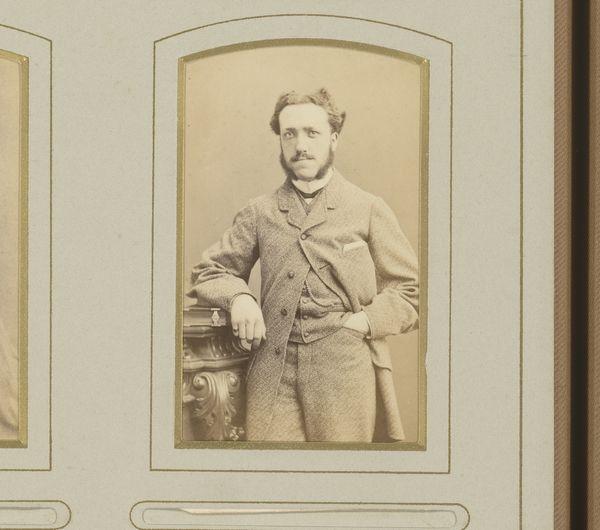
photography
#
portrait
#
photography
#
historical photography
#
framed image
#
19th century
#
genre-painting
Dimensions: height 83 mm, width 52 mm
Copyright: Rijks Museum: Open Domain
Curator: Looking at this framed photograph, "Portret van een man met snor," produced between 1865 and 1903 by De Lavieter & Co., I'm immediately struck by its ability to capture the rigid social codes of the late 19th century. Editor: The first thing that catches my eye is that magnificent moustache! It's incredible—almost like a sculpted extension of his personality. It seems impossibly fragile, which must reflect on how he cared for it! Curator: Precisely. Studio photography was gaining popularity, providing a carefully constructed image for public consumption, reinforcing societal ideals of masculinity and status through controlled presentation. Consider that elaborate grooming a performance, meticulously crafted for the lens. Editor: Yes, the production of his self image. And if you look closely, you see the photographic process itself. The tones are limited, creating a very specific palette and a distinct kind of texture you only find in early photography. I wonder about the specific chemicals, the length of exposure. These aspects clearly dictated the kind of aesthetic possible for the photographer. Curator: Those limitations, though, became aesthetic strengths, contributing to the genre painting aspect it references. These portraits helped solidify identities while constructing new visual vocabularies about how status and gender could be understood and replicated through widespread distribution. Photography democratized portraiture, and made images and societal power more attainable. Editor: I agree, even his posture looks self-conscious and crafted! Still, what strikes me, despite this, is the implied human labor. The arrangement of light, the patience to develop the negative, to retouch the photograph; the frame. There's an almost invisible system of craft underpinning even a simple studio shot. Curator: Indeed. It reminds us how images become entwined within our evolving systems of value, reflecting class and cultural aspirations—even down to that perfectly sculpted moustache. Editor: Well, looking at it from a maker's point of view I now want to better understand 19th century photographic printing. How was it received at the time?
Comments
No comments
Be the first to comment and join the conversation on the ultimate creative platform.
